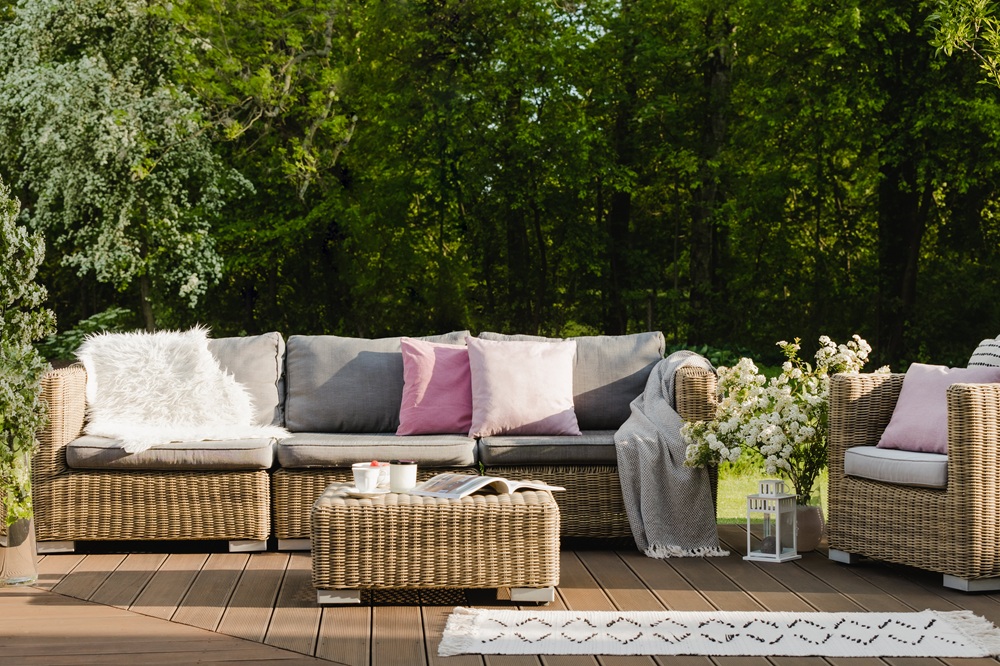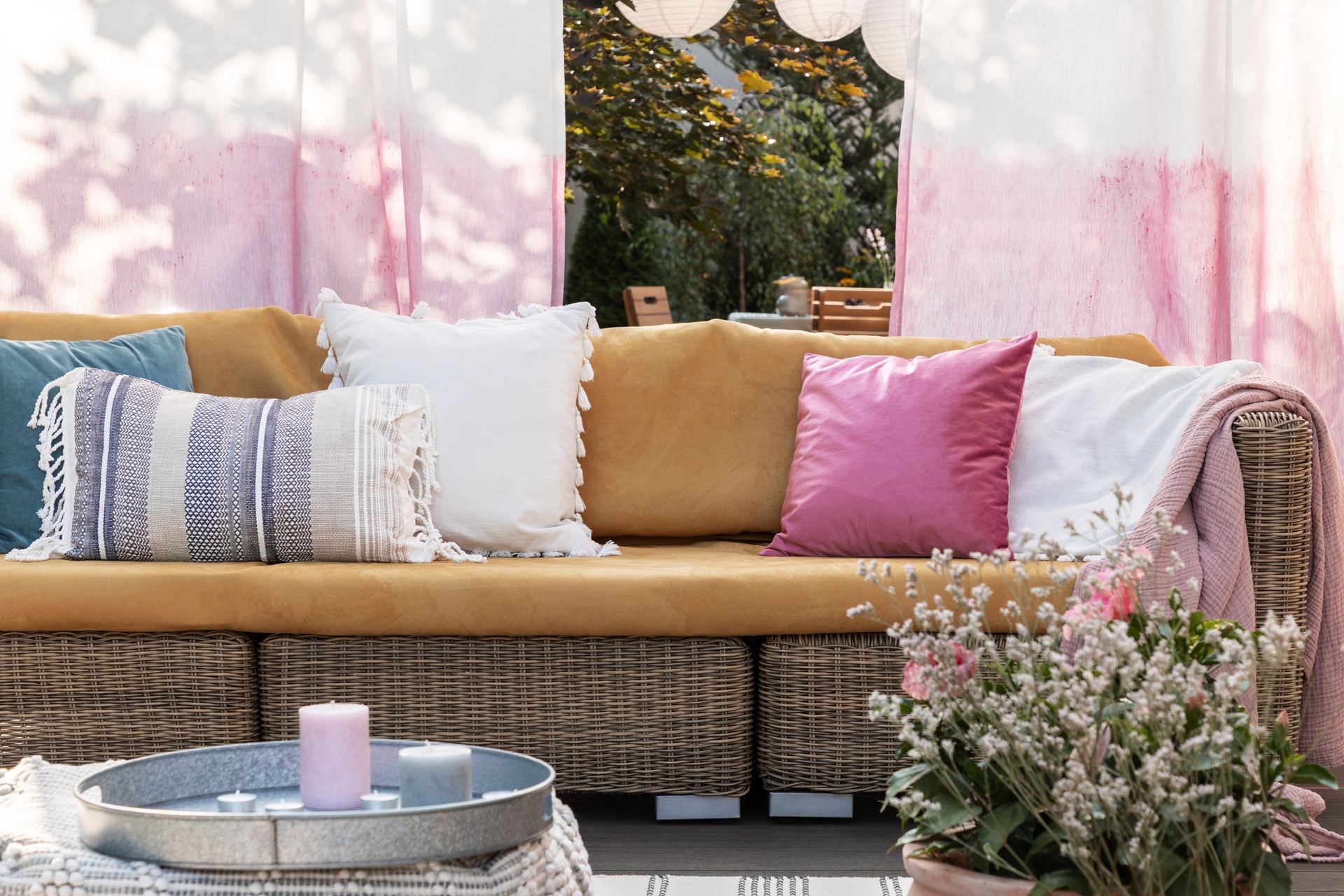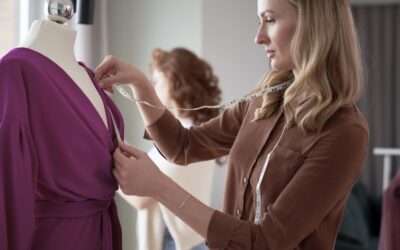Of course, you’re not lazy or careless. It’s just that no one told you certain cleaning habits can actually speed up the wear and tear. So if your goal is to keep your patio looking fresh and inviting, avoiding these misconceptions is a great place to start. Let’s walk through the most common mistakes.
(1) Using Harsh Cleaners Without Checking the Label
Not all cleaning products are safe for outdoor fabrics, even if they’re labeled as “heavy-duty” or “multi-surface.” Many store-bought cleaners, especially those with bleach, ammonia, or degreasers, can break down protective coatings, weaken fabric threads, and fade cushion colors after just a few uses.
Outdoor cushions often come with a UV-resistant or water-repellent treatment, and using the wrong cleaner strips off that layer. Once that happens, your cushions lose their ability to resist water, sun, and stains, which shortens their lifespan dramatically. You might also void the manufacturer’s warranty without realizing it.
What to Do Instead
- Always check the care tag or manufacturer’s website before applying any cleaner.
- Use mild dish soap diluted in warm water or a fabric-safe cleaner specifically made for outdoor furniture.
- Test any product on a small, hidden area first.
- Avoid anything with bleach, alcohol, or acetone unless explicitly approved for that cushion material.
- Wipe away residue with clean water and let the cushion dry naturally.
(2) Scrubbing Too Hard or With the Wrong Tools
It’s tempting to grab a stiff-bristled brush or even a scouring pad when dealing with stuck-on grime or mold, but scrubbing too hard does more harm than good. It weakens the weave of the fabric, wears down the protective coating, and can even stretch or fray the seams.
Over time, this kind of abrasion causes pilling, surface tearing, or areas where the fabric becomes thin and faded. If your cushions start looking dull or worn in spots, aggressive scrubbing is usually the reason.
What to Do Instead
- Use a soft-bristle brush, microfiber cloth, or sponge to clean surface dirt.
- Gently work in circular motions. Don’t apply too much pressure.
- For tough stains, let your cleaning solution sit for 5–10 minutes before wiping (this loosens the dirt without needing force).
- Rinse lightly with a garden hose if necessary.
- Be patient, sometimes a second gentle cleaning session is safer than over-scrubbing once.
(3) Soaking Cushions With Too Much Water
Soaking outdoor cushions in water may seem like a deep-cleaning shortcut, but most cushions aren’t designed to handle full saturation. Foam cores are especially vulnerable; once they absorb water, they become heavy, slow to dry, and prone to internal mold growth.
Water can also get trapped between the fabric layers and the foam, leading to a lingering damp smell, mildew patches, and even discoloration. Even if the outside feels dry, the inside may still be soaked.
What to Do Instead
- Use a spray bottle or damp cloth instead of pouring or spraying excess water.
- For deeper cleaning, remove covers (if they’re removable and washable) and clean the foam separately with limited moisture.
- After cleaning, gently press out excess water using towels; don’t wring or twist.
- Let the cushion dry vertically to encourage drainage and airflow through the bottom.
- Avoid full submersion unless the cushion is labeled as waterproof and washable.
(4) Letting Them Dry in Direct Sunlight for Too Long
Sunlight may help dry your cushions faster, but too much of it, especially for long periods, can cause fading, stiffness, and fabric breakdown. UV rays are powerful enough to damage even outdoor-rated fabrics over time.
If your cushions start looking discolored, bleached in patches, or feel crunchy to the touch, it’s likely from prolonged UV exposure. While most cushions have some UV resistance, that doesn’t mean they’re immune to sun damage when left out all day, every day.
What to Do Instead
- Dry cushions in a shady, breezy spot whenever possible.
- If you must dry them outside, do so during mild sunlight hours, early morning or late afternoon.
- Flip cushions during drying to prevent one side from being overexposed.
- Use a drying rack or clean surface to lift them off the ground for better airflow.
- If cushions stay outside regularly, consider investing in UV-blocking cushion covers or placing them under a patio umbrella.
(5) Putting Away Cushions Before They’re Fully Dry
One of the most common mistakes is storing your cushions too soon after cleaning or a rainy day. Even if they feel dry on the outside, trapped moisture inside the cushion foam can cause mold, mildew, and a persistent musty smell that’s hard to remove.
Storing damp cushions in closed spaces, like bins or deck boxes, creates the perfect humid environment for bacteria and fungi. Once mildew sets in, it can stain the fabric, cause health issues, and ruin the cushion permanently.
What to Do Instead
- After cleaning or rain exposure, allow cushions to air dry for 24–48 hours before storing.
- Check both the fabric and inner foam for dampness, and press with a dry towel to test.
- Store in a dry, well-ventilated area (garage, covered porch, or inside the house).
- Use breathable storage bags or containers with ventilation holes; avoid sealed plastic bins.
- Add moisture absorbers like silica gel packets or baking soda sachets inside storage containers during humid months.
Refresh Your Patio in Time for Your Next Get Together. Call Fox Cleaners!

Harsh cleaners, excess water, or storing cushions while they’re still damp can all lead to fading, mildew, or sagging foam. Fortunately, your cushions aren’t a lost cause. At Fox Cleaners, we specialize in Premium Patio Cushion Cleaning and Repair, restoring both comfort and freshness to these outdoor essentials.
Whether you’re dealing with stubborn stains, torn seams, or cushions that just don’t feel right anymore, we have the tools and expertise to bring them back to life. Since 1947, we’ve been helping families reclaim their outdoor spaces, and yours could be next.
Visit our website or call 937-712-5581 to schedule your service today. Let’s make your patio feel like home again.




